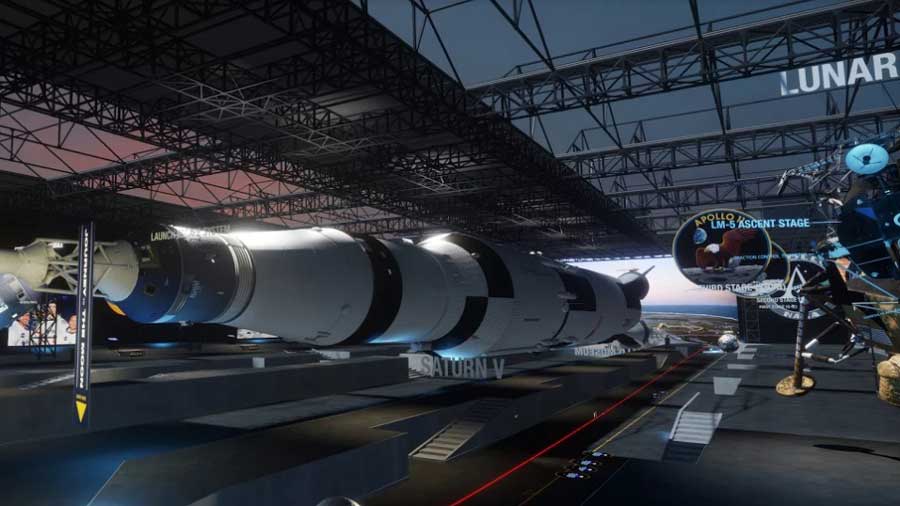Social VR Opens A Grander Stage

Unless you are an active member of the community itself, it might surprise you that Second Life, a virtual world that just celebrated its 14th anniversary, is still going strong.
Though Second Life peaked at 1.1 million monthly active users following a period of meteoric growth in the mid-2000s, usage has plateaued to a still-impressive 800,000 monthly actives per month.
Linden Lab, the company behind Second Life, is moving ahead with its second act, Sansar, a new, more-ambitious platform that will initially support traditional web browsers, as well as a new line of high-end virtual reality headsets, such as the HTC Vive and the Oculus Rift, which need to be tethered to powerful PCs. Other VR platforms are also being considered as more consumers start to adopt them in greater numbers.
‘Creator Beta’ Underway
Following a closed, by-invitation trial, Sansar’ s most recent progress came in the form of a “creator beta” that is targeted to creators but open to all comers. Linden Lab said each “instance” of an experience is currently set up to allow more than 35 concurrent avatars.
Anyone with the right technical setup can enter Sansar for free via a basic account, though consumers can also buy additional capacity and customer support to creators through paid subscriptions starting at $9.99 per month.
Linden Lab said Sansar initially is comprised of a virtual Atlas that contains “hundreds” of VR experiences. Examples of those environments include Apollo11 — Sea of Tranquility, an experience from Loot Interactive that aims to create a “realistic and true-to-scale recreation” of the Apollo 11 moon landing site.
Broadcasting & Cable Newsletter
The smarter way to stay on top of broadcasting and cable industry. Sign up below
“We’ve had a smaller group of users over the past year but we’re now opening it up to anyone so people can start creating things and creating experiences,” Bjorn Laurin, VP of product at Linden Lab, explained.
People who want to join the beta and create a VR experience can build something as large as a 4 kilometer-by-4 km area, and have the option to link experiences together.
“The scale of what you can create can be massive,” Peter Gray, senior director of global communications at Linden Lab, said. Some creators have built mountain ranges, he noted, while others have developed something the size of a small room.
Linden Lab isn’t talking about the size of the Sansar’ s user base during this beta phase, but does expect to see some cross-pollination from consumers that frequent Second Life.
“Second Life had its 14th birthday this summer. We’re planning for this to be with us much, much longer,” Laurin said.
In addition to giving a headset-based 360-degree view, Sansar is also introducing customizable avatars, and has partnered with Speech Graphics to provide what it calls “accurate avatar lip-syncing and facial animations” that enter play when users speak into microphones. Sansar also aims to emulate hand and arm movements by integrating middleware from a company called IKinema.
Like Second Life, Sansar will also operate on a virtual economy based on “Sansar Dollars” that consumers can buy outright or earn by selling items (and entire experiences, at some point) they have created for this new virtual world. Linden Labs get a cut of the action.
Though Sansar is currently focused on a group of early entrants and inventors, Linden Lab also sees it becoming a vehicle for studios and programmers to use to promote or broaden the work they do on television and in the movies. For example, what Game of Thrones fan wouldn’t want to embark on a 360-degree adventure through a digital replica of Westeros?
“Though we’re in the creator preview, we’ve had discussion with studios and others that are interested in what’s possible with this platform,” Gray said. “The aim of this platform is to enable people to create and share their own social VR experiences. Certainly that means individuals and hobbyists, but also that means studios, brands and agencies.”
While Second Life’s usage and longevity indicates that Sansar’s approach with newer VR products and technologies has a decent shot at success, social VR has been a mixed bag in the early going.
Long Road to Mass Market
Even as Google (with Daydream) and Facebook-owned Oculus flesh out their own social VR capabilities, it hasn’t worked out for everyone. AltSpaceVR, a startup considered a pioneer in the realm of social VR, shut down on Augt 3 after it was unable to lock in a new round of funding, but announced last week it was in “deep discussions” to keep the service afloat.
But with Sansar, Linden Lab is playing the long game. “Mass-market adoption is not going to happen tomorrow, but we think it’s going to happen sooner than later,” Laurin said, hopeful that lower prices coupled with a shift to a new generation of cable-less, all-inclusive VR head-mounted displays will be a driving force.
Though consumer adoption of VR hasn’t caught on like wildfire, forecasts still offer a bullish view on the sector. ABI Research, for example, expects the global VR market to produce in excess of $60 billion in revenue in 2022, when the installed base reaches 256 million users.










